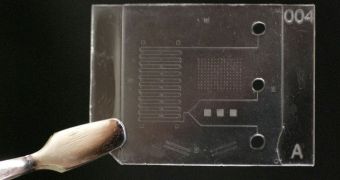The microfluidic device – also known as the lab-on-a-chip – is a new technology that can be used for a variety of applications, including disease diagnostics, water and blood analysis, particle selection, and so on. Now, researchers in the United States want to bring it into the spotlight.
These devices are small, and usually come in the form of chips the size of a flash card. They contain numerous microscopic channels, which use superficial fluid tension principles to conduct their tasks.
The manner in which the fluid samples introduced in this device circulate determines the function of the microfluidic device itself. Using an advanced understanding of fluid dynamics, researchers have learned how to manipulate molecules at the microscale and nanoscale.
The issue with this technology is that creating these tools is difficult at this point, which means that only specialized laboratories can do it. Costs are also fairly high, since no dedicated assembly lines for such scientific instruments exist.
What experts at the Massachusetts Institute of Technology (MIT), in Cambridge, want to obtain is the ability to create these devices in the factory, at a scale large enough to enable practical applications at an affordable cost.
“These are devices that people want to make by the millions, for a few pennies each. The material cost is close to zero, there’s not enough plastic here to send a bill for. So you have to get the manufacturing cost down,” MIT expert David Hardt explains.
He holds an appointment as the Ralph E. and Eloise F. Cross professor of mechanical engineering at the Institute. He is also the leader of Singapore- MIT Alliance's Center for Polymer Microfabrication.
Hardt says that equipment and technologies used for microfluidic device manufacturing today, such as nano-indenting and bonding machines, are extremely expensive, and not designed to work with polymer-based materials.
An imprinting technique called microembossing may be the best way to go forward. With this approach, a polymer substrate is heated, and then literally stamped with a pattern of minuscule channels. A few modifications had to be brought to the technology, but the conversion process was successful.
“Now what they do in manufacturing is impossibly difficult, but it’s been a series of small incremental improvements over years. We’re trying to jumpstart that and not wait until industry identifies all these problems when they’re trying to make a product,” Hardt says.
“We’re at the stage where we’d like industry to know what we’re doing. We’ve been sort of laboring in the vineyard for years, and now we have this base, and it could get to the point where we’re ahead of the group,” he concludes.

 14 DAY TRIAL //
14 DAY TRIAL //